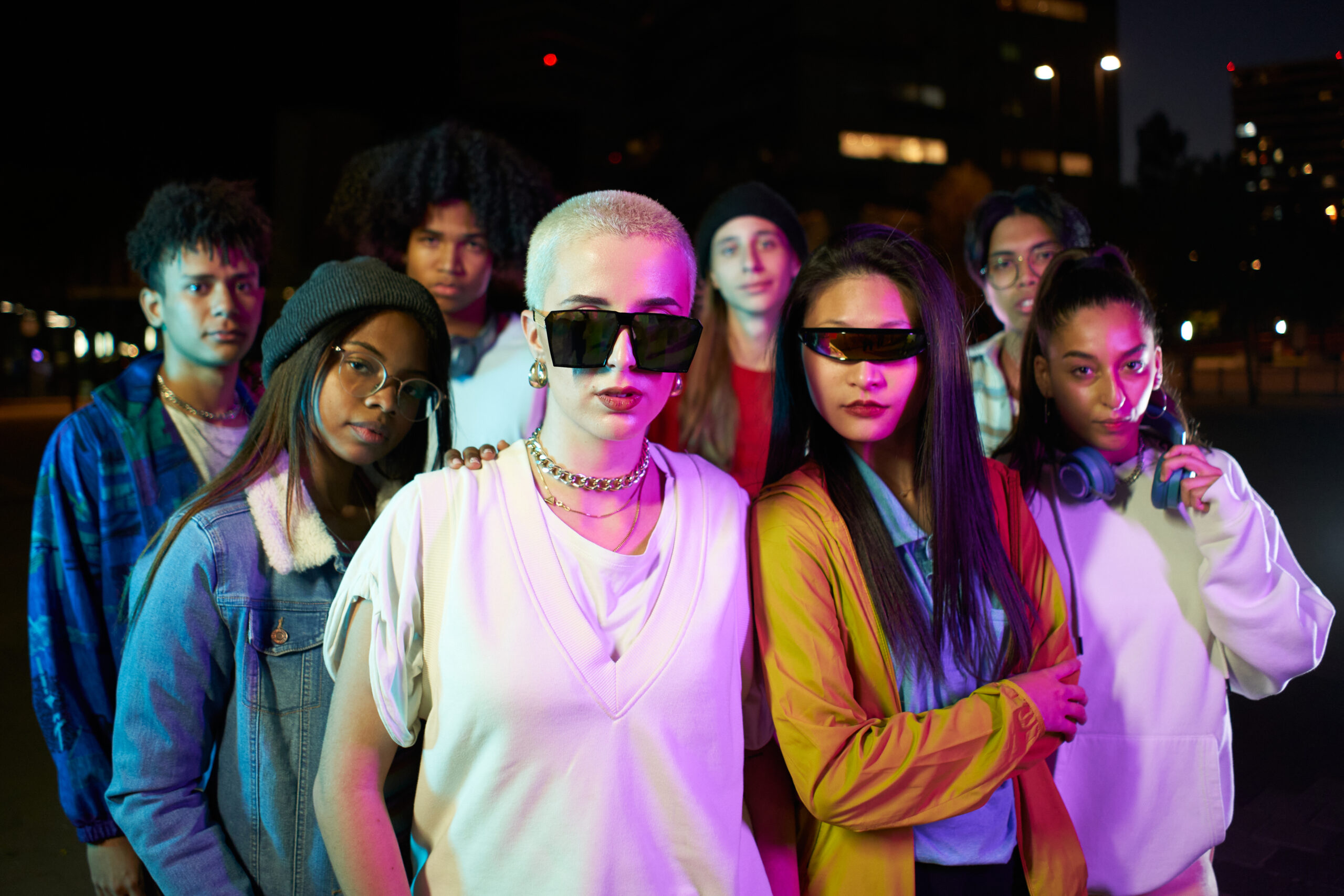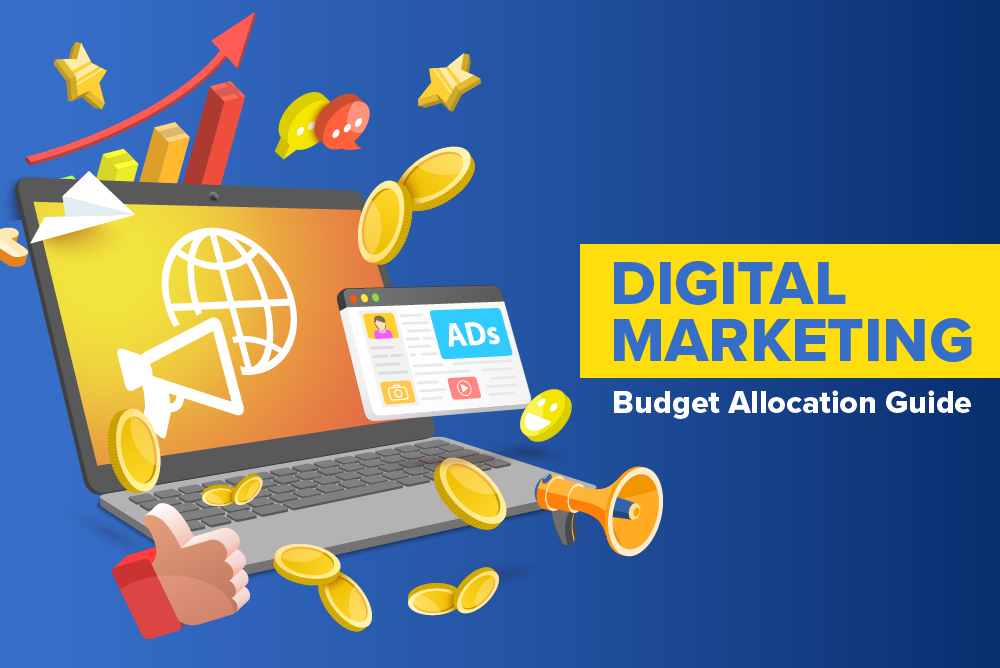Generation Z, people born between 1997 and 2012, is a crucial target audience for businesses today. Their purchasing power is estimated to be at a whopping $360 billion as of 2022, according to Forbes. This is why understanding how to market to this demographic is vital for companies to reach and engage with them effectively.
One essential aspect of Gen Zs’ communication style is their use of slang. Slang is an informal language, often used within specific communities and changes rapidly. Nevertheless, Gen Zs use young people vernacular daily in in-person and online conversations, significantly shaping their identity and social status. To effectively speak to Generation Z in your marketing copy, it’s essential to understand their language and communication style, including their use of slang.
Discover our tips on using slang to connect with Gen Zs in your marketing copy and check out the different examples of how brands successfully incorporate the right language in their campaigns.

Understanding Gen Zs’ Communication Style And Slang
To effectively use the right language to speak to Gen Zs in your marketing copy, you must first understand their communication style, which is highly influenced by social media, where they spend significant time creating and scrolling through content. While doing so, they often use a lot of abbreviations, acronyms, emojis, and other digital shorthand in their written and spoken communication.
One of the defining features of Gen Zs’ communication style is their use of abbreviations and acronyms. They use them to express emotions and reactions quickly, with famous examples including “LOL” (laugh out loud), “OMG” (oh my god), and “TBH” (to be honest). Gen Zs also use emojis extensively, with some even using them as a word substitute.
In addition to abbreviations and emojis, Gen Zs use a variety of slang in their daily conversations. Slangs are informal words or phrases, often used within specific communities and can change rapidly. For example, “lit” means something exciting or excellent, “savage” means someone tough or uncompromising, and “woke” means being aware of social issues and injustices.
To understand the use of slang within Gen Zs’ communication style, businesses must stay updated with the latest terminologies and how they are being used. This requires monitoring social media platforms and engaging towards Generation Z audiences to learn more about their language and communication habits.

5 Tips On Using Slang To Speak To Generation Z In Your Marketing Copy
Now that we have a better understanding of Gen Zs’ communication style, let’s dive into five tips on how to effectively use speak to them in your marketing copy to connect with this target audience.
Tip #1: Use language that is relevant and appropriate for your brand
When using Gen Z terms in your marketing copy, ensure it is relevant to your brand and appropriate for the context. Avoid using those that may be offensive or inappropriate, which can negatively impact your brand’s image. Gen Zs value authenticity and transparency in their interactions with brands. Use words that align with your brand’s values and avoid forcing slang into your messaging to appear cool or trendy.
Check out these examples of slang and how they may be used in for your brand:
- “Chill” – This word is often used in a casual, laid-back context. For example, a clothing brand targeting teenagers might use “chill” in their marketing copy to convey a relaxed vibe: “Stay cool and casual with our new collection of tees.”
- “Lit” – This term is typically used to describe something that is exciting or impressive. A brand that wants to create hype around their product launch might use “lit” in their copy to appeal to a younger demographic: “Get ready to experience the most lit concert of the year!”
- “Dope” – This word is often used to describe something that is cool or impressive. A sports apparel brand might use “dope” in their marketing copy to describe their latest product release: “Score big with our dope new line of athletic gear.”
- “Slay” – This term is commonly used to describe someone who is doing exceptionally well at something. A makeup brand might use “slay” in their copy to promote their new line of cosmetics: “Get ready to slay with our bold and vibrant shades.”
- “On fleek” – This term is often used to describe something that is flawless or perfect. A beauty brand might use “on fleek” in their marketing copy to promote their latest eyebrow product: “Achieve the perfect arch with our on fleek eyebrow kit.
Tip #2: Utilise humour and pop culture references
Gen Zs also enjoy humour such as funny memes and pop culture references in their conversations and interactions. Therefore, use slang incorporating humour and pop culture references to connect with your audience personally.
Gen Zs also trust the opinions and experiences of their peers and influencers. Incorporate user-generated content and influencer marketing in your campaigns to showcase your brand’s personality and connect with your audience more authentically. Some influencers to consider include mummy Key Opinion Leaders (KOLs) and kid influencers.
Tip #3: Optimise for mobile and social media platforms
Gen Zs are digital natives and are more likely to consume content on their mobile devices and social media platforms. Ensure your language is optimised for these platforms when doing social media marketing to maximise your reach and engagement with your audience.
Tip #4: Avoid using slang in a way that feels forced or inauthentic
Using certain vernacular in your marketing copy can help you connect towards Generation Z, but avoiding using it in a way that feels forced or inauthentic is important. Your language should be natural and flow smoothly without trying hard to sound cool or hip. Researching and understanding the language you plan to use is essential to ensure it’s relevant and appropriate for your audience and brand.
Tip #5: Consider the context and tone of the language before using it
Last but not least, consider the context and tone of the vocabulary before incorporating slang in your marketing copy. For example, some language may be more appropriate for a casual, playful manner, while others may be better suited for a serious, informative style.
Certain vernacular may also be associated with specific cultural groups, and it’s essential to be mindful of potential cultural appropriation issues. Avoid using language that may be offensive or disrespectful to a particular culture or community.
Here are some other examples of when the terms might be deemed inappropriate:
- In professional settings: Slang may be deemed inappropriate in professional settings, such as in business meetings, job interviews, or formal presentations. Using slang in these contexts may make you come across as unprofessional or unprepared.
- In serious or sensitive topics: Slang may not be appropriate in serious or sensitive topics, such as healthcare or legal matters. Using slang in these contexts may be perceived as disrespectful or insensitive.
- In academic or scholarly writing: Slang may be inappropriate in academic or scholarly writing, such as research papers or dissertations. Using slang in these contexts may lower the credibility and quality of the writing.
- In multicultural or international settings: Slang may not be understood or appreciated by people from different cultures or countries. Using slang in these contexts may create confusion or misunderstandings.
- In situations where clear communication is crucial: Slang may be inappropriate in situations where clear communication is crucial, such as in emergency situations or when giving directions. Using slang in these contexts may create ambiguity or confusion.
Following these five tips, you can effectively use slang in your marketing copy to connect with Gen Zs and build a loyal customer base.

Examples of Brands That Have Successfully Used Slang in Their Campaigns
Several brands have successfully learned how to market to Generation Z. Let’s take a look at some examples:
1. Nike’s “Don’t sleep on us.” campaign
Nike’s “Don’t sleep on us” campaign targeted Gen Zs and used the phrase “don’t sleep” to mean “don’t miss out.” In addition, the campaign included social media posts, videos, and ads featuring prominent Gen Z athletes and influencers, highlighting Nike’s commitment to inclusivity and diversity.
2. Spotify’s “Thanks, 2016, it’s been weird.” campaign
Spotify’s “Thanks 2016, it’s been weird” campaign used the phrase “it’s been weird” to capture the year’s unpredictable events and connect with Gen Zs’ sense of humour. The campaign included a series of outdoor ads, social media posts, and billboards featuring quirky and relatable messages.
3. McDonald’s “Maccas Run” campaign
McDonald’s Australia’s “Maccas Run” campaign targeted Gen Zs and used the phrase “Maccas” to refer to the fast-food chain. In addition, the campaign included a series of humorous social media posts and videos showcasing McDonald’s as a fun and accessible brand for young people.
By using slang in their campaigns, these brands were able to effectively show how to market to Generation Z and build a loyal customer base. However, it’s important to note that only some words may be appropriate for some brands or campaigns. Therefore, it’s crucial to understand your audience and choose relevant and appropriate language for your brand.

Speaking Gen Z in Your Marketing Copy
We’ve discussed the importance of speaking the language of Gen Zs in your marketing copy. In addition, we’ve explored their communication style, including their use of slang, and provided tips on how to market to Generation Z.
Some key takeaways include:
- Understanding your audience is crucial for effective communication in marketing;
- Gen Zs communicate differently from previous generations and are likelier to use slang in their conversations;
- Using plain language can help brands connect with Gen Zs, but it’s essential to use them in a relevant and appropriate way;
- Being authentic and mindful of potential cultural appropriation issues is crucial when incorporating slang into your marketing copy, and
- While brands have successfully used slang in their campaigns to connect with Gen Zs, only some may be appropriate for some brands or campaigns.
If you’re looking for a social media agency to help you connect with Gen Zs and other demographics, check out First Page. Our team of experts can help you create and execute social media campaigns that resonate with your target audience. Visit our website to learn more.

















